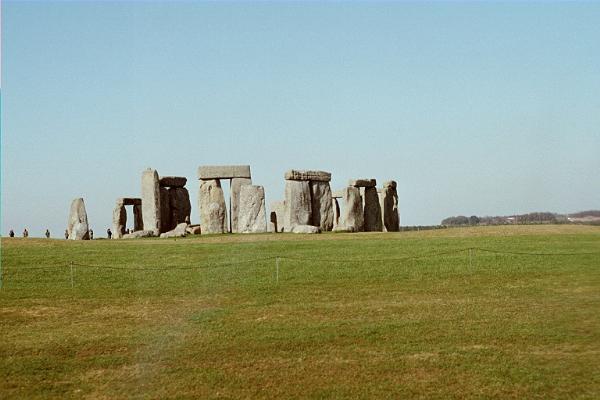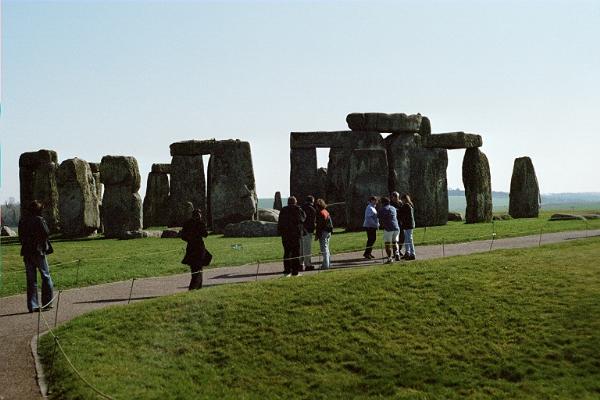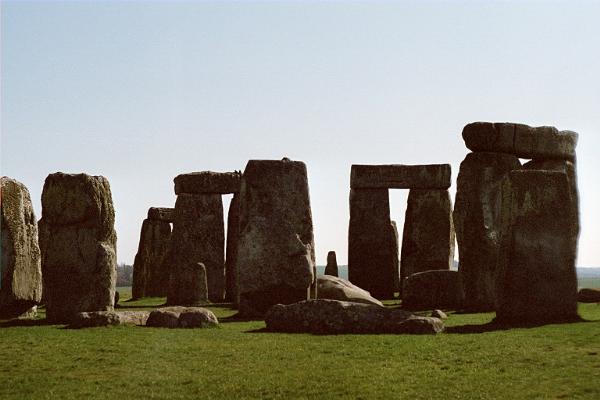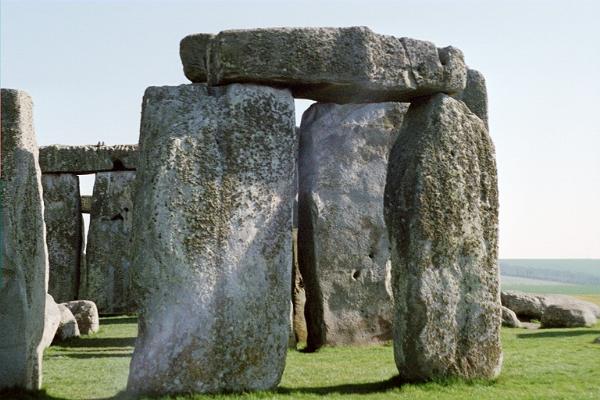_________________________________________________________________________
Stonehenge
From Wikipedia, the free encyclopedia Jump to navigationJump to search For other uses, see Stonehenge (disambiguation).
| Stonehenge in July 2007 | |
| Location | Wiltshire, England |
|---|---|
| Coordinates |  51°10′44″N 1°49′34″WCoordinates: 51°10′44″N 1°49′34″WCoordinates:  51°10′44″N 1°49′34″W 51°10′44″N 1°49′34″W |
| Type | Monument |
| Height | Each standing stone was around 4.1 metres (13 ft) high |
| History | |
| Material | Sarsen, Bluestone |
| Founded | Bronze Age |
| Site notes | |
| Ownership | The Crown |
| Management | English Heritage |
| Website | www.english-heritage.org.uk/stonehenge |
| UNESCO World Heritage Site | |
| Official name | Stonehenge, Avebury and Associated Sites |
| Type | Cultural |
| Criteria | i, ii, iii |
| Designated | 1986 (10th session) |
| Reference no. | 373 |
| Region | Europe and North America |
Stonehenge is a prehistoric monument in Wiltshire, England, two miles (3 km) west of Amesbury. It consists of a ring of standing stones, each around 13 feet (4.0 m) high, seven feet (2.1 m) wide, and weighing around 25 tons. The stones are set within earthworks in the middle of the most dense complex of Neolithic and Bronze Age monuments in England, including several hundred tumuli (burial mounds).[1]
Archaeologists believe it was constructed from 3000 BC to 2000 BC. The surrounding circular earth bank and ditch, which constitute the earliest phase of the monument, have been dated to about 3100 BC. Radiocarbon dating suggests that the first bluestones were raised between 2400 and 2200 BC,[2] although they may have been at the site as early as 3000 BC.[3][4][5]
One of the most famous landmarks in the United Kingdom, Stonehenge is regarded as a British cultural icon.[6] It has been a legally protected Scheduled Ancient Monument since 1882, when legislation to protect historic monuments was first successfully introduced in Britain. The site and its surroundings were added to UNESCO‘s list of World Heritage Sites in 1986. Stonehenge is owned by the Crown and managed by English Heritage; the surrounding land is owned by the National Trust.[7][8]
Stonehenge could have been a burial ground from its earliest beginnings.[9] Deposits containing human bone date from as early as 3000 BC, when the ditch and bank were first dug, and continued for at least another 500 years.[10]




_____________________________________________________________________________________________________________
I will share three astonishing revelations about Stonehenge that will leave you amazed:
- A Second-Hand Monument…
Did you know that the iconic stones of Stonehenge were originally located 100 miles away in Waun Mawn, Pembrokeshire? These massive 25-ton Sarsen stones were sourced from a nearby quarry of silicified sandstone. This revelation challenges the long-held belief that Stonehenge was constructed solely at its current location. The possibility of Merlin’s mythical involvement in its relocation adds a fascinating twist to the story.
- An even bigger Henge nearby…
Just a mere two miles to the northeast of Stonehenge lies a colossal circular feature known as Durrington Walls. This awe-inspiring henge has a staggering 1.2-mile diameter and is the largest of its kind in Britain. It also has 20 enormous shafts, each measuring around 33 feet in circumference and 16 feet deep. Some researchers speculate that while Stonehenge was a burial site, Durrington Walls may have served as a communal space for the living.
- Stonehenge: a romantic gift unappreciated
In a surprising turn of events, Stonehenge was once an unexpected romantic gesture. Cecil Chubb, the former owner, purchased the monument in 1915 for £6,600 as a present for his wife. However, she expressed disappointment, as she had desired curtains instead. Three years later, Chubb selflessly gifted Stonehenge to the public, cementing his place in history. Knighted and celebrated by his nation, Chubb’s act of generosity forever altered the fate of this remarkable ancient site.
The following image offers a glimpse into what Stonehenge might have looked like 4,000 years ago:

